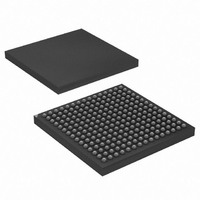AT91CAP7E-NA-ZJ Atmel, AT91CAP7E-NA-ZJ Datasheet - Page 209

AT91CAP7E-NA-ZJ
Manufacturer Part Number
AT91CAP7E-NA-ZJ
Description
MCU CAP7 FPGA 225LFBGA
Manufacturer
Atmel
Series
CAP™r
Specifications of AT91CAP7E-NA-ZJ
Core Processor
ARM7
Core Size
16/32-Bit
Speed
80MHz
Connectivity
EBI/EMI, FPGA, IrDA, SPI, UART/USART, USB
Peripherals
DMA, POR, PWM, WDT
Number Of I /o
32
Program Memory Size
256KB (256K x 8)
Program Memory Type
ROM
Ram Size
160K x 8
Voltage - Supply (vcc/vdd)
1.08 V ~ 1.32 V
Data Converters
A/D 8x10b
Oscillator Type
Internal
Operating Temperature
-40°C ~ 85°C
Package / Case
225-LFBGA
Processor Series
AT91Mx
Core
ARM7TDMI
Data Bus Width
32 bit
3rd Party Development Tools
JTRACE-ARM-2M, MDK-ARM, RL-ARM, ULINK2
Lead Free Status / RoHS Status
Lead free / RoHS Compliant
Eeprom Size
-
Lead Free Status / Rohs Status
Details
Available stocks
Company
Part Number
Manufacturer
Quantity
Price
- Current page: 209 of 520
- Download datasheet (11Mb)
24.1.4.4
24.1.4.5
24.1.5
8549A–CAP–10/08
Divider and PLL Block
Main Clock Frequency Counter
Main Oscillator Bypass
When disabling the main oscillator by clearing the MOSCEN bit in CKGR_MOR, the MOSCS bit
in PMC_SR is automatically cleared, indicating the main clock is off.
When enabling the main oscillator, the user must initiate the main oscillator counter with a value
corresponding to the startup time of the oscillator. This startup time depends on the crystal fre-
quency connected to the main oscillator.
When the MOSCEN bit and the OSCOUNT are written in CKGR_MOR to enable the main oscil-
lator, the MOSCS bit in PMC_SR (Status Register) is cleared and the counter starts counting
down on the slow clock divided by 8 from the OSCOUNT value. Since the OSCOUNT value is
coded with 8 bits, the maximum startup time is about 62 ms.
When the counter reaches 0, the MOSCS bit is set, indicating that the main clock is valid. Set-
ting the MOSCS bit in PMC_IMR can trigger an interrupt to the processor.
The Main Oscillator features a Main Clock frequency counter that provides the quartz frequency
connected to the Main Oscillator. Generally, this value is known by the system designer; how-
ever, it is useful for the boot program to configure the device with the correct clock speed,
independently of the application.
The Main Clock frequency counter starts incrementing at the Main Clock speed after the next ris-
ing edge of the Slow Clock as soon as the Main Oscillator is stable, i.e., as soon as the MOSCS
bit is set. Then, at the 16th falling edge of Slow Clock, the MAINRDY bit in CKGR_MCFR (Main
Clock Frequency Register) is set and the counter stops counting. Its value can be read in the
MAINF field of CKGR_MCFR and gives the number of Main Clock cycles during 16 periods of
Slow Clock, so that the frequency of the crystal connected on the Main Oscillator can be
determined.
The user can input a clock on the device instead of connecting a crystal. In this case, the user
has to provide the external clock signal on the XIN pin. The input characteristics of the XIN pin
under these conditions are given in the product electrical characteristics section. The program-
mer has to be sure to set the OSCBYPASS bit to 1 and the MOSCEN bit to 0 in the Main OSC
register (CKGR_MOR) for the external clock to operate properly.
The PLL embeds an input divider to increase the accuracy of the resulting clock signals. How-
ever, the user must respect the PLL minimum input frequency when programming the divider.
Figure 24-4
shows the block diagram of the divider and PLL blocks.
AT91CAP7E
209
Related parts for AT91CAP7E-NA-ZJ
Image
Part Number
Description
Manufacturer
Datasheet
Request
R

Part Number:
Description:
Customizable Microcontroller
Manufacturer:
ATMEL Corporation
Datasheet:

Part Number:
Description:
DEV KIT FOR AVR/AVR32
Manufacturer:
Atmel
Datasheet:

Part Number:
Description:
INTERVAL AND WIPE/WASH WIPER CONTROL IC WITH DELAY
Manufacturer:
ATMEL Corporation
Datasheet:

Part Number:
Description:
Low-Voltage Voice-Switched IC for Hands-Free Operation
Manufacturer:
ATMEL Corporation
Datasheet:

Part Number:
Description:
MONOLITHIC INTEGRATED FEATUREPHONE CIRCUIT
Manufacturer:
ATMEL Corporation
Datasheet:

Part Number:
Description:
AM-FM Receiver IC U4255BM-M
Manufacturer:
ATMEL Corporation
Datasheet:

Part Number:
Description:
Monolithic Integrated Feature Phone Circuit
Manufacturer:
ATMEL Corporation
Datasheet:

Part Number:
Description:
Multistandard Video-IF and Quasi Parallel Sound Processing
Manufacturer:
ATMEL Corporation
Datasheet:

Part Number:
Description:
High-performance EE PLD
Manufacturer:
ATMEL Corporation
Datasheet:

Part Number:
Description:
8-bit Flash Microcontroller
Manufacturer:
ATMEL Corporation
Datasheet:

Part Number:
Description:
2-Wire Serial EEPROM
Manufacturer:
ATMEL Corporation
Datasheet:











